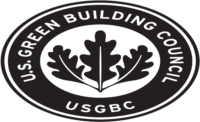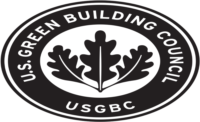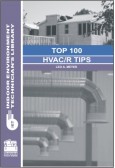The USGBC has released its annual “Top 10 States for LEED,” and Illinois has once again come out on top.
The per capita list highlights states throughout the country that are making significant strides in sustainable building design, construction, and transformation.
“Green construction is quickly outpacing conventional construction in the U.S.,” said Rick Fedrizzi, CEO and founding chair of USGBC. “LEED has become an essential tool for the transformation of building design and construction. By recognizing these states excelling in the use of LEED, we are celebrating the green building professionals, architects, business, policy, and community leaders who work tirelessly to design and develop innovative solutions toward a healthier, more sustainable future. LEED construction drives economic growth, creates jobs, and makes communities greener.”
Now in its sixth year, the ranking looks at total square feet of LEED-certified space per resident, based on U.S. Census data, and includes commercial and institutional green building projects certified throughout 2015. Illinois retained its top national position for the third year in a row, with 161 LEED certifications representing 3.43 sq ft of certified space per resident. Illinois and Colorado are the only two states to have made the list every year since 2010.
A newcomer to the top 10 list is Utah (no. 10), illustrating how LEED is expanding beyond states with densely populated urban areas. And after a three-year hiatus, Texas (no. 8), Washington (no. 4), and Nevada (no. 6) are again on the list.
A continued strong performance from Maryland (no. 2) and Virginia (no. 9) has reaffirmed the mid-Atlantic region, which includes Washington, D.C., as the epicenter of green building, according to USGBC. While D.C. is not included in the list of top states due to its status as a federal territory, it continues to lead the nation with 19.3 sq ft of LEED space per resident certified in 2015.
Rounding out the list was Massachusetts (no. 3), Colorado (no. 5), and California (no. 7).
The council said this year’s list has the highest average (2.47) per capita space LEED-certified among the top 10 states since 2010. Four of the six states included in the 2014 list increased the square feet of space they certified per resident in 2015 (IL, MD, MA, and CA).
Collectively, 1,633 commercial and institutional projects became LEED-certified within the top 10 states for LEED in 2015, representing 274.9 million sq ft of real estate. Worldwide, 4,837 projects were certified in 2015, representing 818.9 million sq ft.
USGBC calculates the list using per capita figures as a measure of the human element of green building. This also allows for comparisons among states with significant differences in population and number of buildings.
In 2015, USGBC found that its LEED for Building Operations and Maintenance was once again the most popular rating system within the top 10 states, representing 49% of the total square footage certified. LEED for Building Design and Construction was the second most popular rating system in the top 10, representing 46% of the square footage certified, and LEED for Interior Design and Construction was the third most popular rating system, representing 5% of total square footage certified in these states in 2015.







